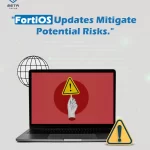cybersecurity and threat management cannot be overstated. As we delve into the complex world of protecting digital assets, understanding the nuances of threat management becomes pivotal. Through this exploration, we aim to unravel the intricacies of cybersecurity and threat management, emphasizing its importance, types of risks, operational mechanisms, and the unparalleled expertise offered by Meta Techs in this domain.

What is Threat Management?
Threat management, in essence, encompasses the processes and strategies employed to identify, assess, and mitigate potential security threats to an organization’s digital infrastructure. This proactive approach is designed to safeguard against a myriad of vulnerabilities that could compromise the integrity, confidentiality, and availability of data. It involves a continuous cycle of monitoring, analyzing, and refining security measures to adapt to the ever-evolving threat landscape.
At its core, threat management is the cornerstone of effective cybersecurity protocols. It transcends mere reactive measures, advocating for a forward-thinking stance on potential cyber threats. This paradigm shift towards anticipatory defense mechanisms is crucial in preempting attacks before they materialize, thereby fortifying an organization’s digital fortresses against adversaries.
The complexity of threat management is underscored by the diversity of threats it aims to counteract. From malware, phishing, and ransomware attacks to more sophisticated nation-state-sponsored cyber espionage, the spectrum of threats is vast and varied. These threats not only pose a risk to the immediate security of data but also threaten the operational continuity and reputation of businesses.
The Importance of Cybersecurity and Threat Management
cybersecurity and threat management have emerged as indispensable pillars of organizational resilience. The proliferation of digital technologies has exponentially increased the attack surface for potential cyber threats, making robust cybersecurity protocols not just an option but a necessity.
The importance of cybersecurity and threat management lies in its ability to protect the most important information assets and ensure the smooth functioning of business processes. A breach in cybersecurity can lead to catastrophic outcomes, including financial losses, erosion of customer trust, legal repercussions, and long-term damage to brand reputation. Therefore, investing in cybersecurity is not merely a defensive measure but a strategic imperative that underpins business continuity.
Moreover, regulatory compliance plays a significant role in shaping the cybersecurity landscape. With stringent data protection laws like GDPR in Europe and CCPA in California, businesses are mandated to adhere to rigorous cybersecurity standards. Failure to comply can result in hefty fines and legal complications, further emphasizing the need for an effective threat management strategy.
Types of Risks and Threats
- Malware and Ransomware: Malicious software (malware) is a common threat that includes viruses, worms, Trojans, and spyware. Ransomware, a subtype of malware, encrypts files or systems and demands payment for decryption, causing data loss and operational disruptions.
- Phishing and Social Engineering: Phishing attacks use deceptive emails, messages, or websites to trick users into revealing sensitive information like passwords or financial data. Social engineering techniques exploit human psychology to manipulate individuals into divulging confidential information or performing actions that compromise security.
- Data Breaches: Data breaches occur when unauthorized parties gain access to sensitive data, such as customer records, intellectual property, or financial information. These breaches can result from weak security controls, insider threats, or targeted attacks.
- Insider Threats: Insider threats involve employees, contractors, or partners who misuse their access privileges to steal data, sabotage systems, or engage in other malicious activities. These threats can be intentional or unintentional, posing significant risks to organizational security.
- Cyber Espionage: Cyber espionage refers to covert activities aimed at stealing sensitive information, trade secrets, or intellectual property from government entities, businesses, or individuals. State-sponsored actors, criminal groups, and competitors often engage in cyber espionage for political, economic, or strategic advantages.
- Distributed Denial of Service (DDoS) Attacks: DDoS attacks disrupt online services by overwhelming servers or networks with a flood of traffic, causing them to become inaccessible to legitimate users. These attacks can be launched by botnets or coordinated groups, leading to financial losses and reputational damage.
- IoT Vulnerabilities: The Internet of Things (IoT) devices, such as smart home appliances and industrial sensors, are susceptible to security vulnerabilities due to inadequate encryption, weak authentication mechanisms, and lack of timely software updates. Compromised IoT devices can be used for botnet attacks or data theft.
- Supply Chain Risks: Supply chain attacks target third-party vendors, suppliers, or service providers to infiltrate their systems and gain access to the primary target’s network. Attackers exploit trust relationships within the supply chain to implant malware, exfiltrate data, or disrupt operations.
- Zero-Day Exploits: Zero-day exploits target newly discovered vulnerabilities in software or hardware that have not been patched or mitigated by security updates. Attackers leverage these exploits to launch targeted attacks before defenders can develop and deploy effective defenses.
- Physical Security Threats: Physical security threats involve unauthorized access to facilities, theft or tampering of hardware devices, and other physical breaches that can compromise data confidentiality, integrity, and availability. Proper access controls, surveillance, and security protocols are essential to mitigate these risks.
How Threat Management Works
The operational framework of threat management is built on a foundation of risk assessment and the implementation of strategic measures to mitigate identified threats. This process begins with the identification of potential vulnerabilities within an organization’s digital infrastructure. By leveraging advanced tools and technologies, cybersecurity professionals can detect anomalies and patterns indicative of potential threats.
Following the identification phase, the next step involves the thorough assessment of identified risks. This entails evaluating the potential impact of each threat and prioritizing them based on their severity. Such prioritization allows organizations to allocate resources more efficiently, focusing on mitigating the most critical vulnerabilities first.
The culmination of the threat management process is the implementation of mitigation strategies. These strategies can range from technical solutions, such as firewalls and antivirus software, to organizational measures, including employee training and policy development. The goal is to establish a multi-layered defense mechanism that can thwart a wide array of cyber threats.
Meta Techs A Leader in Cybersecurity and Threat Management
At Meta Techs, we understand that each organization’s cybersecurity needs are unique. As such, we offer tailored solutions designed to address specific vulnerabilities and threats. Our comprehensive suite of services encompasses everything from cybersecurity threat hunting and management to incident response and recovery. By adopting a holistic approach to cybersecurity, we ensure that our clients are equipped with the tools and knowledge necessary to navigate the complex digital landscape securely.
Our approach to protecting businesses in Portland and Vancouver is multifaceted. We begin by conducting thorough risk assessments to identify potential vulnerabilities within an organization’s digital infrastructure. This enables us to develop customized cybersecurity strategies that address the unique challenges faced by each business.
Moreover, we place a strong emphasis on cybersecurity education and awareness. By empowering employees with the knowledge and tools to recognize and respond to cyber threats, we strengthen the human element of cybersecurity. This, in combination with our advanced technical solutions, creates a comprehensive defense mechanism that safeguards businesses against a wide array of cyber threats.
The Benefits of Partnering with Meta Techs for Cybersecurity and Threat Management
Choosing Meta Techs as your cybersecurity and threat management partner offers numerous advantages. Our comprehensive approach to cybersecurity ensures that your business is protected against the evolving threat landscape. By leveraging our expertise, you gain access to cutting-edge technologies and strategies designed to fortify your digital infrastructure.
One of the key benefits of partnering with Meta Techs is the peace of mind that comes with knowing your business is in capable hands. Our proactive stance on cybersecurity threat hunting and management significantly reduces the risk of successful cyber attacks, allowing you to focus on your core business operations without the constant worry of security breaches.







